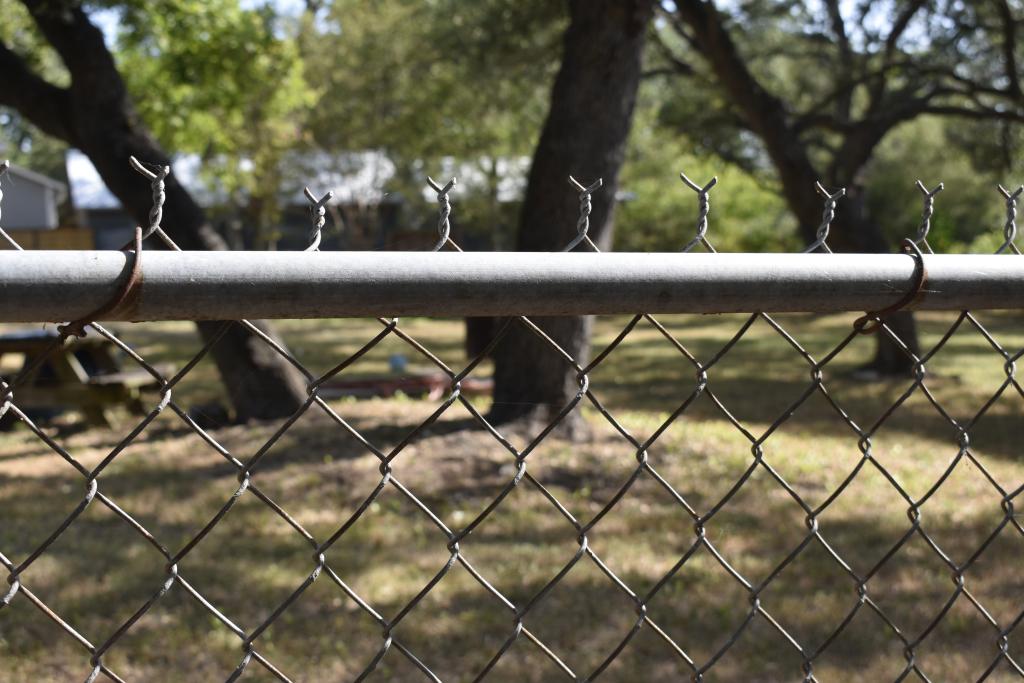
This webpage includes information to make sure your fence project follows City of Austin regulations. The Austin City Council passed updated "Safe Fencing" requirements on July 20, 2023, to reduce features that can make fences more dangerous for children and wildlife. Unless otherwise noted, this page's regulations apply to residential and commercial/multi-family properties. Use the interactive Safe Fencing Guide to help you determine if Safe Fencing regulations apply to your fencing project.
The following City of Austin codes include fencing requirements*:
- City Code 25-2-899 – Fences as Accessory Uses
- Ordinance No. 20230720-156
- Customer Activities in Utility Easements - Fences and Structures
- Land Development Code 25-12, Article 14 - Swimming Pool and Spa Code
*Links to additional fence-related requirements appear at the bottom of this webpage.
What you will find on this page:
- When You Need a Permit
- What is Regulated
- What is Not Regulated
- Safe Fencing Requirements
- Other Regulations That Affect Fence Design
- Apply for a Fence Permit
- Fence Violations
- Appointments
- When You Need a Permit
-
All fences are required to comply with the code requirements within the "What is Regulated" section, even if the fence does not require a permit.
A fence requires a permit if it:
- Is located in a floodplain. To determine if your property is within a floodplain, visit the Floodpro webpage.
- Is more than 8 feet high at any point.
- Is more than 6 feet high for residential property along the City of Austin public right-of-way (ROW), other than a public alley. You will also need a City of Austin letter of authorization. A Board of Adjustment variance is required to get the letter of authorization.
Visit the Apply for a Fence Permit section for information on how to apply.
Please schedule an appointment if you are unsure if your fence will require a permit.
- What is Regulated
-
Height
Height regulations depend on the type, location, and purpose of the fence as indicated in the following sections.
Types of fences
Solid
- A “solid” fence has more than 20% solid material.
- Some solid fences up to 8 feet high are allowed (see “Uses and Location” section).
Ornamental
- An “ornamental” fence includes no more than 20% solid material and uses an open design.
- Height restrictions for other types of fences do not apply to ornamental fences.
- Generally, a chain link fence is considered ornamental.
Uses and Location
Adjoining Residential and Commercial/Industrial Uses
A solid fence may be up to 8 feet high if the fence is located along the line between a property zoned for residential use and any of these conditions apply:
- The adjacent property is zoned as a commercial or industrial base district.
- The adjacent property is used for commercial or industrial use.
- The alley separates a property zoned for residential use and one of the above.
Building Setback Line
A solid fence can be up to 8 feet high if the fence is located on or within the building setback lines.
Corner Lot
- Before building a fence on a corner lot, contact the Transportation and Public Works Department (TPW) to confirm that the fence will not obstruct the view of traffic and be a traffic hazard. You can contact TPW by dialing Austin 3-1-1 from anywhere in Austin, by mobile app, or Austin 3-1-1 online. City Code §14-9-2 and the City’s Transportation Criteria Manual provide guidelines on view obstruction.
- You need a permit to build a fence more than 6 feet high for residential property along the City of Austin public right-of-way (ROW), other than a public alley. You will also need a City of Austin letter of authorization. A Board of Adjustment variance is required to get the letter of authorization.
Floodplain
You need a permit to build a fence within a floodplain regardless of the fence height. This applies to fences built using any material (wood, metal, or stone). To determine if your property is within a floodplain, please visit the Floodpro webpage.
Swimming Pool Barrier
A fence used as a swimming pool barrier must follow Chapter 25-12, 64 Article 14 (Swimming Pool and Spa Code) and the safe fence requirements (see "Safe Fencing Requirements" section).
Property Lines
- A solid fence constructed along a property line may not be more than 6 feet high, measured from the natural grade up.
- If there is a change in grade of at least 1 foot, measured along any section of a solid fence on a property line, then the portion of the fence where the grade change occurs may be up to 7 feet high.
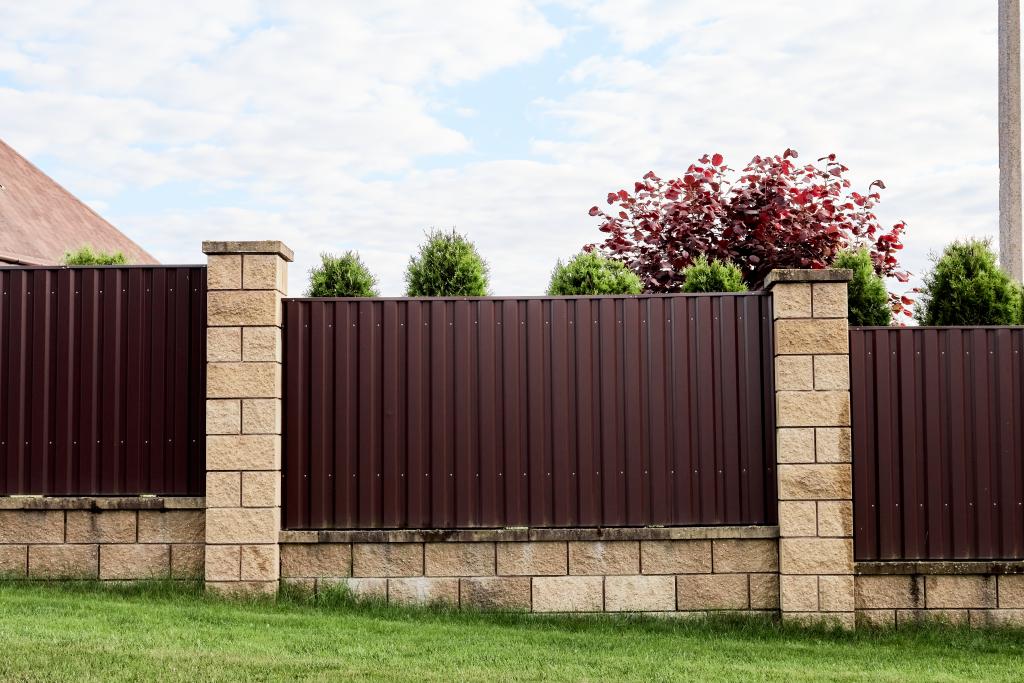
Mixed material fence on a grade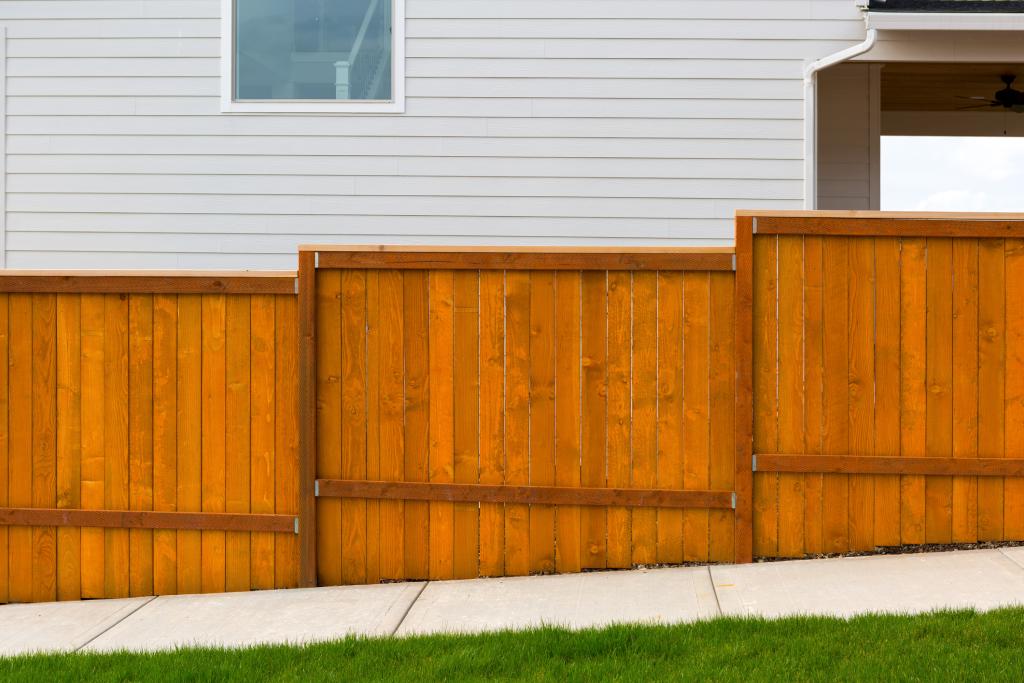
Wooden fence on a grade- If a property owner seeks to build a higher fence, it can be up to 8 feet high in some circumstances, with written consent by adjoining property owners, if:
- There is a change in grade of at least 2 feet within 50 feet of the boundary between the adjoining properties; or
- A structure exists that is likely to enable a child to climb over a 6-foot fence and gain access to a hazardous situation, including a swimming pool.
- In some cases, you will need authorization from the steward of the property. The City of Austin Real Estate Services department can help locate the steward of the property. A consultation with Land Development Information Services is recommended in these circumstances because other limitations might apply. Please schedule an appointment with Site Plan Review staff within Land Development Information Services for the consultation.
- If you seek to build a fence that exceeds these restrictions, you must request authorization from the Board of Adjustment. Please schedule an appointment with Board of Adjustment staff for questions.
Wildland-Urban Interface
Fences in the wildland-urban interface that are higher than 6 feet may require review and/or permits. Please schedule an appointment with Site Plan Review staff within Land Development Information Services for questions.
- What is Not Regulated
-
Materials
The City of Austin does not regulate the types of materials (wood, metal, stone, etc.) that may be used in the construction of a fence on private property.
- Safe Fencing Requirements
-
New safe fencing regulations do not apply to fences that:
- Were constructed before July 31, 2023, or
- Are at least 6 feet high and located on a property with a non-residential use.
If more than 50 percent of the total linear distance of an existing fence is replaced, the entire fence must follow the safe fencing code requirements.
Fences (new or replaced) that follow historic design standards are first required to comply with safe fencing standards, then to comply with the remaining applicable historic design standards to the greatest extent possible while fulfilling safety goals.
Use this interactive wizard to help you determine if Safe Fencing regulations apply to your fencing project.
DosOptions to meet the new requirements include:
- Flat-top fences
- Vertical pickets that are not spiked above the top rail (must be separated by less than 2 inches or more than 9 inches)
- Chain link fences using knuckle selvage tops, which are bent into a loop with no pointed ends
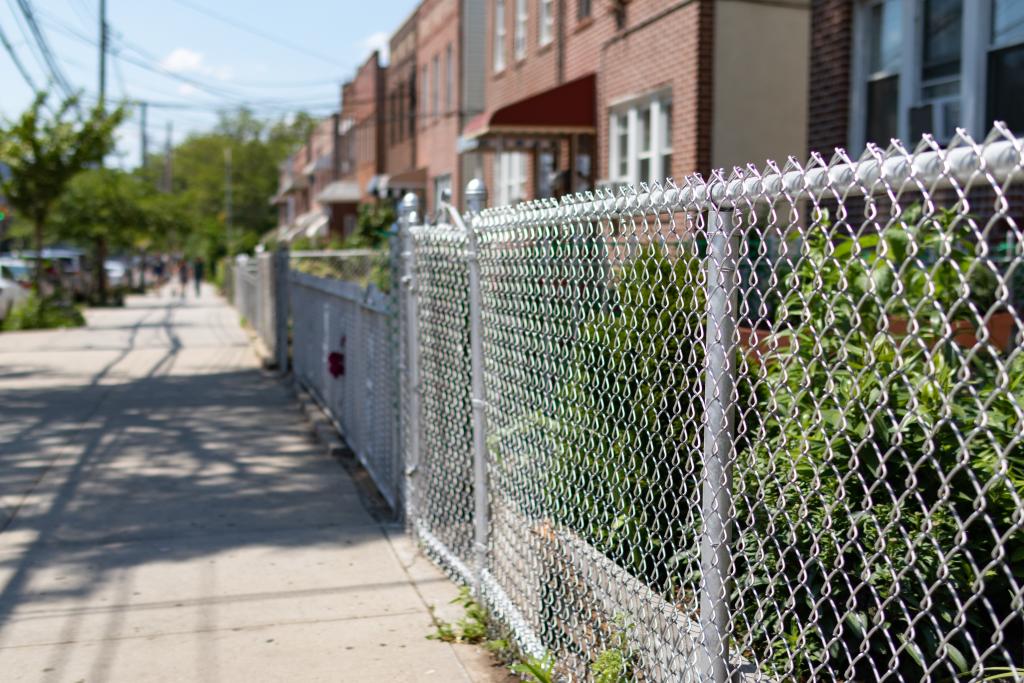
Chain link fence with knuckle selvage
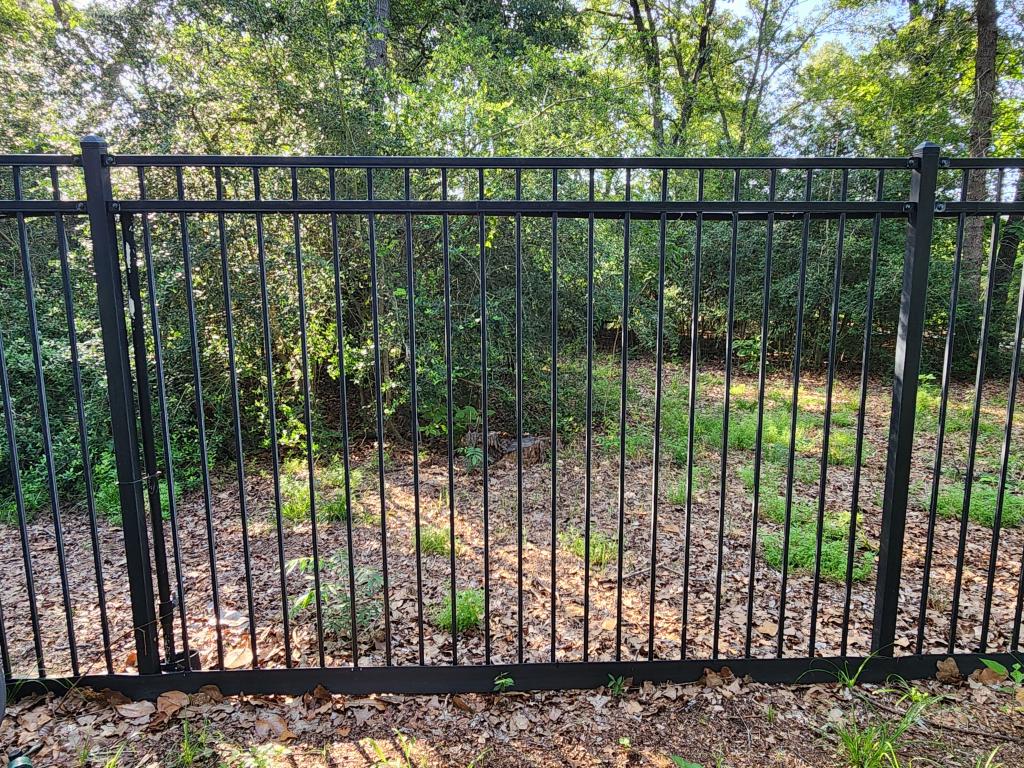
Flat-top metal fence
Don'tsA fence may not include the following:
- Spiked pickets, spiked bars, or other spiked decorative elements above the top horizontal backer rail
- Vertical pickets above the top horizontal backer rail if the vertical pickets are separated by more than 2 inches and less than 9 inches
- Razor-like wire
- Barbed wire unless the fence is enclosing an airport or other landing area for aircraft, and the use of barbed wire is required by Federal Aviation Administration regulation.
- City Code Section 9-4-41 (Restriction on Use of Barbed Wire Fences) is repealed effective July 31, 2023. A person may not use barbed wire at the top of or above a fence that is at least six feet high.
- Any fence design or feature that creates substantial risk for entrapment or impalement
Chain link fence with twist selvage
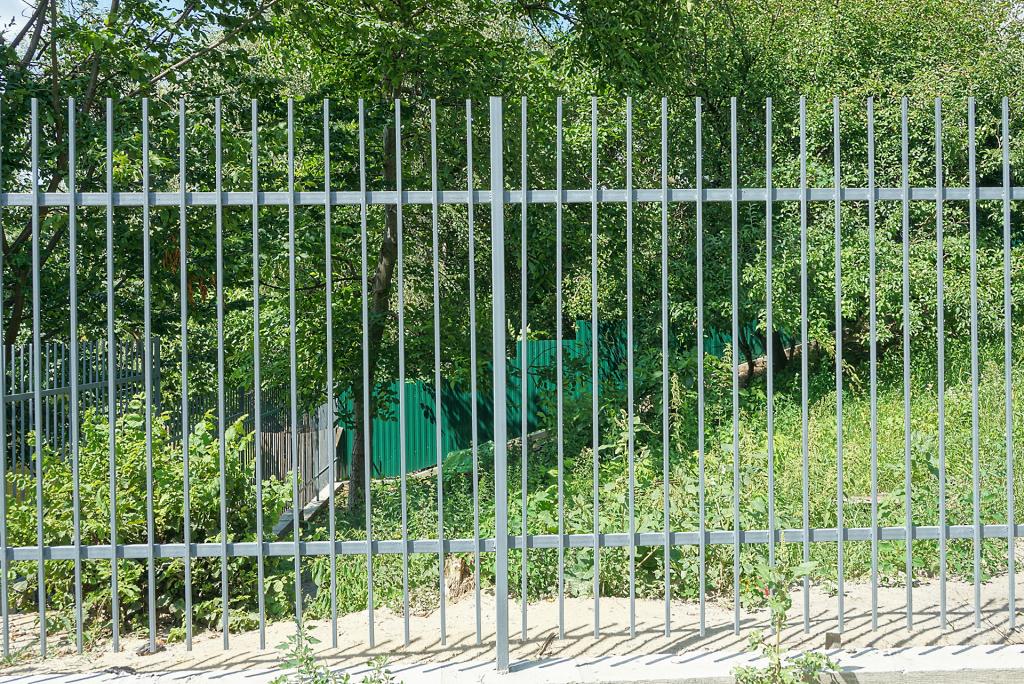
Metal fence with spiked pickets - Other Regulations That Affect Fence Design
- Apply for a Fence Permit
-
Residential Fence Permit
 Determine if a permit is required
Determine if a permit is requiredVisit the "When you need a permit" section to determine if your project requires a permit.
If a permit is required, go to Step 2.If a permit is not required, please visit the "What is Regulated," "Safe Fencing Requirements," and "Other Regulations That Affect Fence Design" sections for construction requirements. All fences must follow these guidelines even if they do not require a permit.
 Gather required documents
Gather required documentsThe following documents are needed to submit through the Residential Fence Permit Application Web Form:
- Fence Permit Application (PDF)

- Plot Plan Survey - Label all climbable structures, hazards, adjoining commercial or industrial property, and trees greater than 19" in diameter measured 4'6" above grade on property or adjoining property
- Image of drawing of fence design
- Acknowledgment of Expired Permits (PDF)
 - If there are expired permits on the property, you will need to complete this document. Additional documentation may be required for application approval which may result in a separate application and additional fees.
- If there are expired permits on the property, you will need to complete this document. Additional documentation may be required for application approval which may result in a separate application and additional fees.
 Do you have an AB+C account?
Do you have an AB+C account?(If yes, go to Step 4)
The applicant listed on the application must have an AB+C account to pay fees and manage the application. If you do not have an AB+C account, please register for an AB+C account here. For additional assistance, please see the Web Help Manual (PDF). Please make a note of the email address used for this new account. You will need this for Step 4.
 Submit the application using the web form
Submit the application using the web formComplete and upload the required documents and related information and submit your application using the Residential Fence Permit Application Web Form.
Residential Fence Permit App Web Form
Once you submit the registration, you will receive an automatic email confirming your submission, including the approximate wait time. Residential Intake staff will check the submission to verify all required documentation is provided.
Please do not resubmit a form, as this will create delays.
 Pay the Plan Review Fees and begin the Review Process
Pay the Plan Review Fees and begin the Review ProcessIntake staff verifies that all required documentation is provided, and they will contact the Applicant designated on the permit application. The Applicant will need to log into their AB+C account to pay for the invoiced plan review fees.
Once the invoiced plan review fees are paid, the permit application review will begin.
 Submit update to review, if required, or extend or withdraw the application
Submit update to review, if required, or extend or withdraw the applicationIf the application is approved, continue to Step 7.
If the application is rejected and comments need to be addressed, contact the assigned review staff for questions and guidance to clear comments. When you are ready, submit the requested information using the Modify a Residential Permit Application Web Form.
If the application is nearing the expiration date or if you no longer wish to proceed with the permit application, complete the Request for Extension, Withdrawal, or Reactivation (PDF) form and submit using the Modify a Residential Permit Application Web Form.
Modify a Res Permit App Web Form
 Pay the Permit Fees and Activate the Permit
Pay the Permit Fees and Activate the PermitOnce the Fence Permit Application has been approved, the Building Permit will be generated by the Residential Plan Review staff. The generated permits will be in a "Pending" status and ready for activation.
Permit activation instructions are sent to the Applicant. The Applicant must notify the registered General Contractor so they can pay for and activate the "pending" building permit with Building and Trade Contractor Services staff. Please visit the Activating a Permit webpage to learn how to pay for the permits, activate the building permit, and print and post the Building Permit.
 Begin Construction and Schedule Inspections
Begin Construction and Schedule InspectionsOnce the building permit is in an "Active" status, the contractor can begin construction and schedule the inspections. Construction cannot occur until the permits have been paid for and activated.
- Learn how to schedule inspections, understand the building inspections process, and find the assigned Inspector by visiting our Building Inspections webpage.
- Once a permit is in an "Active" status, it expires on the 181st day if the project has not been scheduled nor received an inspection. Upon the performance of an inspection, the permit expiration date will be extended 180 days. A "Canceled" or "Failed/No Work Performed" inspection result does not extend the expiration date. Learn more about building permit inspections by visiting our Building Inspections webpage.
 Submit a Revision, if required
Submit a Revision, if requiredIf changes are needed or required to the approved building permit application, complete the Plan Review Revision Form (PDF) and submit through the Modify a Residential Permit Application Web Form.
Modify a Res Permit App Web Form
Commercial Fence Permit
 Contact Staff for Guidance
Contact Staff for GuidanceTo inquire about a permit for fences on commercial property, please schedule a "Site Plan Review, Exemptions, Corrections, and Revision Questions" appointment with Land Development Information Services (LDIS) staff.
- Fence Permit Application (PDF)
- Fence Violations
-
If you have a complaint about a fence violation within the City of Austin, you can report it to Austin 3-1-1 any of the following ways:
- Dial Austin 3-1-1 from anywhere in Austin
- Use the Austin 3-1-1 mobile app
- Use Austin 3-1-1 online.
- Appointments
-
If you have additional questions before you begin a fence project, please contact one of these groups:
Residential
For residential single-family fencing questions, use the “Residential Zoning Questions (Property)” appointment type.
Residential Zoning Questions (Property)
Ask general zoning questions related to the Land Development Code for properties that contain single-family, townhouses, duplexes, and accessory dwelling unit (ADU) residences. For example, impervious cover, setbacks, building coverage, Subchapter F, and other site development and zoning regulations for any new construction, addition, and other changes to a property.
Expected Appointment Duration: 20 minutes
Commercial/Multi-family
For commercial and multi-family fencing questions, use the “Site Plan Review, Exemptions, Corrections, and Revision Questions” appointment type.
Site Plan Review, Exemptions, Corrections, and Revision Questions
The Land Development Information Services staff, previously known as the Development Assistance Center (DAC), can answer general site plan questions such as which Site Plan Application to submit, the site plan process and requirements, Site Plan Exemptions, Corrections, Revisions, and Conditional Use Permits for commercial and multi-family properties, as well as residential and commercial boat docks.
Expected Appointment Duration: 20 minutes
Board of Adjustment
Ask questions related to the variance process and assistance with filing a variance request. Learn more at the Board of Adjustment Support webpage.
Expected Appointment Duration: 30 minutes
Floodplain
To determine if the property is within a floodplain, visit the Floodpro webpage. For questions about floodplain regulations, please contact Floodpro@austintexas.gov.


